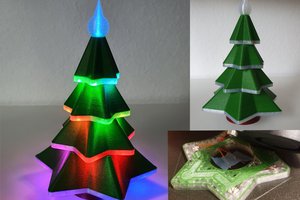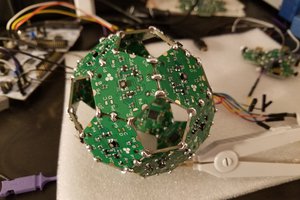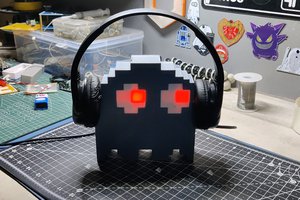This design uses 14 WS2812 LEDs which fit perfectly around a convex mirror. These sit within a 3D printed shell, and are in turn covered by two layers of polycarbonate sandwiching tinted elexctrostatic bagging, achieving the partial mirroring that creates the infinity mirror effect. A 3D printed bezel holds these components in the shell. All of the electronics are mounted to the backside of the bike mirror. The electronics are covered by a backplate attached with finger-loose bolts.
I painted the WS2812 LED strip with black paint to hide the labels and circuitry. Wires from this strip go into a dremeled-out pocket in the printed shell to get to the rest of the electronics on the underside. I found solid-copper wire to be best for this, allowing a sharp right angle in the wire.
An additional RGB LED is located at the center. This is a BlinkM module that I had sitting around. It can be controlled via I2C, but I never quite got this working (possibly because internal pullup resistors weren't enough). Instead I have it set to approximately white at a moderate brightness.
I spray painted the back of the mirror to provide extra protection to the thin (presumably mylar) mirror film. The backplate of the bike mirror was repurposed as the back plate of the arc reactor as well.
3D printing took several iterations since getting the dimensions right is always trial and error with my kind-of-ancient Cupcake CNC printer. It was also nearly the limit in size that my printer was capable of.
 Gertlex
Gertlex


 makeTVee
makeTVee
 marciot
marciot
 Hexabitz
Hexabitz
 Arnov Sharma
Arnov Sharma